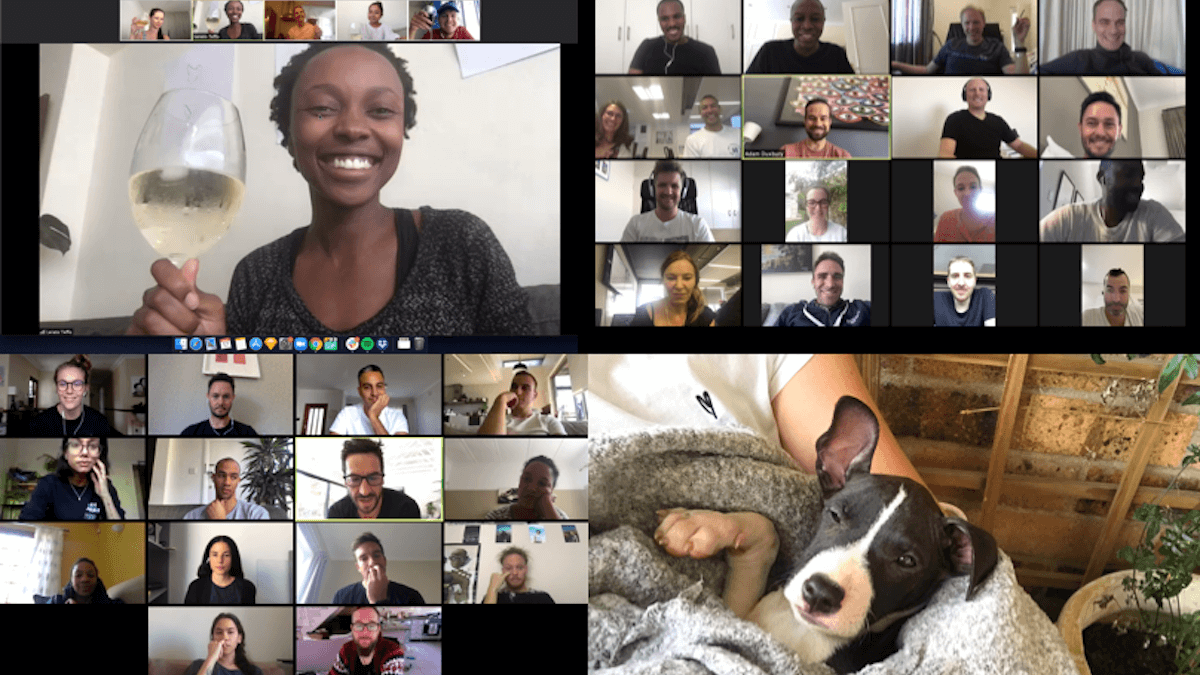COVID-19 poses real challenges for every business. To make sure Yoco could continue being there for the small businesses we serve – and provide support during a difficult time – we had to adapt to a new way of working, fast.
To protect the Yoco team and limit COVID-19’s spread, the entire team started working from home from 16 March. While this way of working brings challenges of its own, it has also brought the team closer – we’ve virtually met each others’ families, pets and spent time in one another’s homes.
We created a Work From Home guide to make sure we can still support our customers, communicate effectively and maintain our relationships.
Here are some principles we have implemented at Yoco, that might help you effectively establish your own WFH rituals and practices.
Over-communicate and communicate intentionally
Focus on keeping everyone on the same page while everyone works from home. Don’t make assumptions about what your colleagues know or don’t know. And most importantly, make sure you keep a personal connection with your teammates by implementing daily checkins and rituals.
At Yoco, we’ve implemented a checkin called Yoco Daily, where we catch up on the work different teams are doing and any developments around COVID-19 and how it might impact the small businesses that we serve.
Here are some tips that we’ve incorporated in our plan that might help you too.
- Be intentional about staying in touch – set up recurring meetings in each others’ calendar.
- Where appropriate, use emojis where it makes sense to help convey tone. 😂😁😔
- Be proactive and ask questions. Avoid making assumptions.
- Establish virtual team rituals/ meetings to promote open communication and stay connected.
- Get into the habit of daily standups with your team via Zoom or Geekbot. Zoom has a free account that lets you 40-minutes video calls for free
- During calls, document what was discussed, decisions that were made and next steps. Share those notes with the relevant people using appropriate communication channels.
- Create Slack channels for ongoing projects and provide continuous feedback and updates for transparency.

Take accountability and foster trust
- Use emojis in your Slack status: 🍔 Getting Lunch. 🗒In a meeting.
- Trust your team members.
- Deliver the work you committed to and share results with your team/manager.
- Let your manager and team know when you’ll be logging in later than expected (especially if you’re part of a customer-facing team).
- Clarify how quickly you’re expected to reply to various forms of communication.
- Don’t leave your team hanging. If you’re not available for a certain period, let your team know.
Stay connected while working from home
Regular communication doesn’t necessarily mean staying connected. Being home alone for long periods can be really daunting, so check in with your colleagues informally during the day. It’s also important to make sure you’re having fun with your team – at Yoco we still have our standing Tuesday Card Games and our 3pm Dance Parties.
- Make sure your video is on during zoom calls.
- When you’re taking a coffee or tea break, or having lunch, invite others to join you on your virtual break.
- Celebrate wins with your team.
- Share photos of your day with your teammates to keep them in the loop with your setup and life.
- Share your WFH hacks with the rest of the team.

Ensure working from home days are your most productive days
There are resources available to help you be more productive at home. To get you started, LinkedIn Learning has made the following Learning Path available for free: Remote Working: Setting Yourself and Your Teams Up for Success
Choose the right tools to communicate
Be mindful of your mode of communication when working from home. At Yoco, we use different platforms to talk about different things.
These are our guidelines around our most frequently used modes of communication.
When to use:
Email is a bit slower, deliberate and more ‘official’. Use it when you need to be formal.
Best practice:
- Use professional email etiquette.
- Keep it short where possible (or rather call the person).
- Avoid “Reply all”.
SLACK
When to use:
When something is more immediate, casual or you’d like to instantly collaborate. It allows for easy discussions between various team members.
Best practice:
- Set your Slack up to work best for you by updating your default preferences.
- Only join relevant channels to avoid unnecessary distractions (#NOFOMO).
- Gather your thoughts and send one long message rather than several short ones.
- Snooze notifications when you need focus time.
- Use Google Drive to store documents and only share links on Slack.
- Use your status to let your colleagues know what zone you’re in.
PHONE / WHATSAPP CALLS
When to use:
- When an email / Slack conversation will consist of a number of paragraphs.
- When you’d need to send more than three emails to convey a message.
- When you know you’ll be chatting for more than 5 minutes.
Best Practice:
- Familiarise yourself with how to make voice calls on Whatsapp.
- Use it when it is just you and another person (use Zoom for group call).
- Keep it short and sweet.
ZOOM / GOOGLE HANGOUTS
When to use:
- When an email / Slack conversation will consist of a number of paragraphs.
- When you would need to send more than three emails to convey a message.
- Usually for at least 15 minutes.
- When seeing someone’s face will add real value to the conversation.
Best Practice:
- Get on top of the technical setup: Zoom / Google Hangouts.
- Turn the video on.
- Join a few minutes before to test video / audio.
- Make sure your space is quiet.
- Mute yourself when you are not speaking.
- Make sure you are dressed from head to toe.



